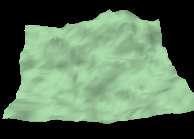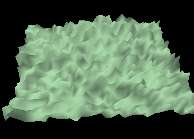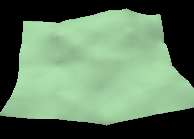


|
Terrain Tutorial Index
A TGA Library
Height Maps
Lighting
Artificial Terrain Generation
Mid Point Displacement
Smoothing |
| [Previous: Circles Algorithm] | [Next: The MPD Algorithm] |
Terrain Tutorial
Mid Point Displacement
The Mid Point Displacement, MPD hereafter, aka the Plasma Algorithm, is a subdivision algorithm. The terrain is built iteratively, in each iteration the level of detail increases. From a computational point of view this algorithm is very inexpensive when compared to the previous algorithms, and its results are quite impressive.
This algorithm was conceived to generate square terrains with dimensions (2^n + 1) x (2^n + 1), where n stands for the number of iterations. This implies that with just 8 iterations a good looking terrain with 257x257 grid points is generated. With 10 iterations we get 1025x1025 grid points. Just be ware of the memory and performance implications, a terrain with 1025x1025 grid points takes a lot of memory, and unless there is some real time navigation algorithm implemented, performance will be lousy.
The most important parameter of this algorithm is the roughness constant. This value determines the look of the final terrain, from extremelly smooth, to very rough. The most common value for this parameter is 1.0. The images bellow show examples of MDP with various roughness constants.
| r = 1.0 |

|
| r = 2.0 |

|
| r = 0.5 |

|
| [Previous: Circles Algorithm] | [Next: The MPD Algorithm] |